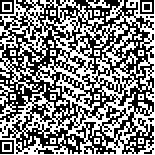| 本文已被:浏览 1742次 下载 1254次 |

码上扫一扫! |
| 基于计算机断层扫描血管造影的冠状动脉心肌桥分型特点 |
| 杨阳1,鞠志国2,袁明远3*,李荣先3,张慧群3,宁忠平4,方明4,李新明4 |
|
|
(1. 海军军医大学(第二军医大学)长征医院心内科, 上海 200003;
2. 上海健康医学院医学影像学院, 上海 201318;
3. 上海健康医学院附属周浦医院放射科, 上海 201318;
4. 上海健康医学院附属周浦医院心内科, 上海 201318
*通信作者) |
|
| 摘要: |
| 目的 应用冠状动脉计算机断层扫描血管造影(CTA)分析冠状动脉心肌桥分型特点,旨在进一步提高对心肌桥的认识。方法 回顾性分析冠状动脉CTA诊断为心肌桥的1 658例患者资料,分析心肌桥在整个冠状动脉系统中的分布特点,测量不同形态心肌桥壁冠状动脉长度及收缩期狭窄程度,统计分析不同类型心肌桥形态学和收缩期狭窄发生情况的差异。结果 1 658例心肌桥患者中,1 606例(96.86%)为单支冠状动脉单发心肌桥,9例(0.54%)为单支冠状动脉多发心肌桥,43例(2.59%)为多支冠状动脉单发心肌桥。左前降支心肌桥患者1 559例(94.03%)共1 606处心肌桥,左回旋支心肌桥81例(4.89%)87处,右冠状动脉心肌桥18例(1.09%)19处。不完全型心肌桥患者1 244例(75.03%),完全型心肌桥362例(21.83%),兼有两型特点的复杂型心肌桥52例(3.14%)。复杂型心肌桥患者壁冠状动脉长度长于完全型心肌桥,差异有统计学意义[(24.32±4.02)mm vs(16.13±1.27)mm,P<0.05];不完全型心肌桥壁冠状动脉收缩期狭窄>50%的发生率[31.19%(388/1 244)vs 41.16%(149/362)]、近端冠心病发生率[9.41%(117/1 244)vs 35.08%(127/362)]、临床缺血症状阳性率[32.88%(409/1 244)vs 58.29%(211/362)]和心电图缺血表现阳性率[37.78%(470/1 244)vs 65.75%(238/362)]均低于完全型心肌桥,差异均有统计学意义(P均<0.05)。结论 冠状动脉心肌桥发生部位多为左前降支,以单支单发为主。心肌桥可分为不完全型、完全型和复杂型3种类型,以不完全型为主,不同类型心肌桥的形态学和临床表现不同。 |
| 关键词: 冠状动脉 心肌桥 壁冠状动脉 计算机断层扫描血管造影术 病理形态学 |
| DOI:10.16781/j.0258-879x.2018.06.0627 |
| 投稿时间:2018-04-15修订日期:2018-06-03 |
| 基金项目:上海市浦东新区领先人才项目(PRWI2015-01),上海市浦东新区周浦医院放射科重点专科建设项目(ZP-XK-2015C-4),上海健康医学院附属周浦医院心内科重中之重学科建设项目(ZP-XK-2015A-01). |
|
| Features of myocardial bridge based on computed tomography angiography |
| YANG Yang1,JU Zhi-guo2,YUAN Ming-yuan3*,LI Rong-xian3,ZHANG Hui-qun3,NING Zhong-ping4,FANG Ming4,LI Xin-ming4 |
(1. Department of Cardiology, Changzheng Hospital, Navy Medical University(Second Military Medical University), Shanghai 200003, China;
2. Medical Imaging College, Shanghai Medical and Health College, Shanghai 201318, China;
3. Department of Radiology, Zhoupu Hospital Affiliated to Shanghai Medical and Health College, Shanghai 201318, China;
4. Department of Cardiology, Zhoupu Hospital Affiliated to Shanghai Medical and Health College, Shanghai 201318, China
*Corresponding author) |
| Abstract: |
| Objective To analyze the pathological and anatomic features of myocardial bridge (MB) using coronary computed tomography angiography (CTA), so as to deepen the understanding of MB. Methods The data of 1 658 patients with MB diagnosed by coronary CTA were retrospectively analyzed. The distribution of MB in the coronary system were analyzed, the length of mural coronary artery (MCA) and average systolic stenosis rate of different types of MB were measured, and the anatomic morphological differences of different types of MB were statistically analyzed. Results Among the 1 658 patients, 1 606 (98.86%) were single MB in single coronary artery, 9 (0.54%) were multiple MB in single coronary artery, and 43 (2.60%) were single MB in different coronary arteries. A total of 1 606 MB lesions in 1 559 cases (94.03%) were located at the left anterior descending (LAD) coronary artery, 87 MB lesions in 81 cases (4.88%) at the left circumflex (LCX) coronary artery, and 19 MB lesions in 18 cases (1.09%) at the right coronary artery (RCA). There were 1 244 cases (75.03%) of incomplete MB, 362 cases (21.83%) of complete MB, and 52 cases (3.14%) of complex MB with the features of both types. The length of MCA in the complex MB was significantly longer than that of the complete MB ([24.32±4.02] mm vs[16.13±1.27] mm, P<0.05). The incidence of systolic stenosis rate>50% (31.19%[388/1 244] vs 41.16%[149/362]), incidence of proximal coronary artery disease (9.41%[117/1 244] vs 35.08%[127/362]), positive rate of ischemic symptom (32.88%[409/1 244] vs 58.29%[211/362]), and positive rate of ischemic electrocardiogram (37.78%[470/1 244] vs 65.75%[238/362]) of the incomplete MB were significantly lower than those of the complete MB (all P<0.05). Conclusion MB lesions mainly locate at LAD coronary artery and are single MB in single coronary artery. MB-MCA morphology can be divided into complete, incomplete and complex types by coronary CTA, with incomplete type being the main type, and each type of MB has different clinical and morphological features. |
| Key words: coronary artery myocardial bridge mural coronary artery computed tomography angiography pathomorphology |
.jpg)
.jpg)